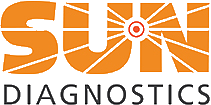Intralipid® Is Not Adequate for Interference Testing
Lipemia is best defined as turbidity in a sample caused by elevated triglycerides, mostly as chylomicrons, because they are large and more triglyceride-rich. Interference is due to a decrease in absorbance due to light scattering or, with severe lipemia, volume displacement. Turbidity is visually evident with triglycerides above about 300 mg/dL. Sample blanking and bichromatic measurements help but do not eliminate this interference.
For interference testing, lipemia is often simulated using Intralipid®, an emulsion containing 20% soybean oil, 1.2% egg yolk phospholipids, 2.25% glycerin, and water. Unfortunately, the photometric response to this synthetic “fat” differs from “physiological” lipemia. It is far more accurate to assess lipemia using intact human triglyceride-rich lipoproteins as lipoproteins are far more complex than Intralipid.
Here are the facts:
- The nonlinear relationship between turbidity and triglyceride concentration reflects the heterogeneous nature of lipoprotein particles.
- The L-Index derived from Intralipid does not accurately reflect triglyceride concentration.
- The structure of synthetic liposomes in Intralipid is very different from chylomicrons.
- Intralipid does not usually mimic interference from human triglycerides
So, why is Intralipid commonly used for interference testing: Because it is convenient. Isolating human chylomicrons from patient samples with elevated triglycerides is expensive and demanding, and requires an ultracentrifuge and other specialized equipment.
Fortunately, laboratories and diagnostic companies can now purchase concentrated human triglyceride-rich lipoproteins ready to use from Sun Diagnostics. There are no more excuses for not performing interference testing for lipemia as accurately as possible.
References
- Nanji AA, Poon R, Hinberg I. Lipaemic interference: effects of lipaemic serum and intralipid. J Clin Pathol 1988; 41:1026-1027.
- Dimeski G. Interference testing. Clin Biochem Rev 2008; 29 Suppl (i): S43-S48.
- Ji JZ, Meng QH. Evaluation of the interference of hemoglobin, bilirubin, and lipids on Roche Cobas 6000 assays. Clin Chim Acta 2011; 412:1550-1553.
- Bornhorst JA, Roberts RF, Roberts WL. Assay-specific differences in lipemic interference in native and intralipid-supplemented samples. Clin Chem 2004; 50:2197-2201.
